For many a Jordan head, the entire 26-shoe lineage never gets better than the Jordan III. Do we agree with that? Well… sometimes. What makes this sneaker particularly special is that the III represents the start of the Tinker Hatfield-era of the Jordan brand and, with all due respect to Peter Moore (who designed the Jordan I and II), the brand is defined by Hatfield’s touch — even if it’ll always be indebted to the late Moore’s initial vision.
In the sneaker community, Hatfield’s name is almost as big as MJ’s (okay, not really but… kinda; okay, not kinda, but… he’s big). He’s the designer behind many of Nike’s most beloved kicks outside of the Air Jordan brand and his fingerprint is seen everywhere in the sneaker world. And without a doubt, the III was his coming-out party.
The III is the sneaker that saved Nike after Hatfield’s then-unconventional design won Jordan over just as he was contemplating leaving the company. Where was His-Airness headed? Off to partner with Peter Moore and Nike’s first marketing guru, Bruce Kilgore, on a new sneaker company — Van Grack. According to Mental Floss Magazine (and our own interviews with Moore), Jordan was ready to pack up and go in deep with Moore/ Kilgore but was convinced to say after a last-ditch meeting during which Hatfield’s design for the Jordan III was unveiled.
Hatfield’s Jordan III implemented design specifics that Jordan himself had voiced in the past and introduced the Jumpman logo (ironically, originally sketched by Moore) on the tongue of the sneaker. This proved to Jordan that the brand was as invested in him as a cultural icon, willing to make his personal branding more central to the shoe than their own famous Swoosh. For a sneaker brand back then, this was a huge deal and signaled to everyone just how important MJ was to the brand.
Had Jordan decamped to Van Grack, Nike might not exist today. Seriously. The whole thing proved a masterstroke by Hatfield — Moore was offering a 1/3 partnership stake and Nike topped that simply by repositioning a logo and adding Jordan’s recommended cement texture.
Over the decades, Hatfield has ascended to god status in the design world but his beginnings are humble. He graduated from the University of Oregon with a degree in architecture and was hired at Nike to help design marketing material. It wasn’t until entering a company-wide contest that Hatfield was “discovered” for his sneaker-designing talents. An impressed Moore put the upstart to work, where Hatfield’s very first produced design became the Nike Air Max, which pulled the revolutionary move of exposing the sneaker’s air-unit — redefining the look of Nike shoes forever.
Hatfield’s second sneaker? The Jordan III. Seriously, dude is that good. We’re talking about an architecture graduate here. And now it’s hard to imagine a time when Hatfield won’t be thought of as the sneaker world’s most important designer.
Unlike the Air Jordan I and II, which were high-top sneakers, the III featured a less restrictive mid-rise cuff at Jordan’s request — then unheard of for a basketball shoe and a highly controversial move for an athlete coming off a broken ankle. It also featured a soft, tumbled leather upper, which helped Jordan break in the shoes instantly, an exposed Air bubble, and the sneaker’s two most defining features — a gray cracked print around the toe and heel (called “cement” by Nike), and an oversized tongue baring an iconic image of Jordan dunking, used without Nike’s direct permission and based on a throwaway sketch by Moore that caught Hatfield’s eye.
Jordan rocked the IIIs at the 1988 Slam Dunk Contest, where he dunked from the free-throw line — solidifying this silhouette’s must-have status amongst basketball fans. If that legendary moment wasn’t enough to convince people that the IIIs were the future of shoes, the genius ad campaign, directed by and starring Spike Lee as She’s Gotta Have It’s Mars Blackmon, certainly underscored the point.
Today, in celebration of what many consider the Jordan Brand’s GOAT, we’re running through the 25 best designs in the sneaker’s 34-year history — from its debut in 1988 to the best colorways of today. We don’t imagine the sneaker is going to run out of steam anytime soon. Next year, we’ll bump up the list to 35 to match the 35th anniversary. I’m sure it’ll be easy, this is a sneaker that keeps on giving.
And if you want to see a fully custom version of this silhouette, check out T.I. reacting to his new kicks on Uproxx’s Fresh Pair, below.
Air Jordan III White Cement, 1988
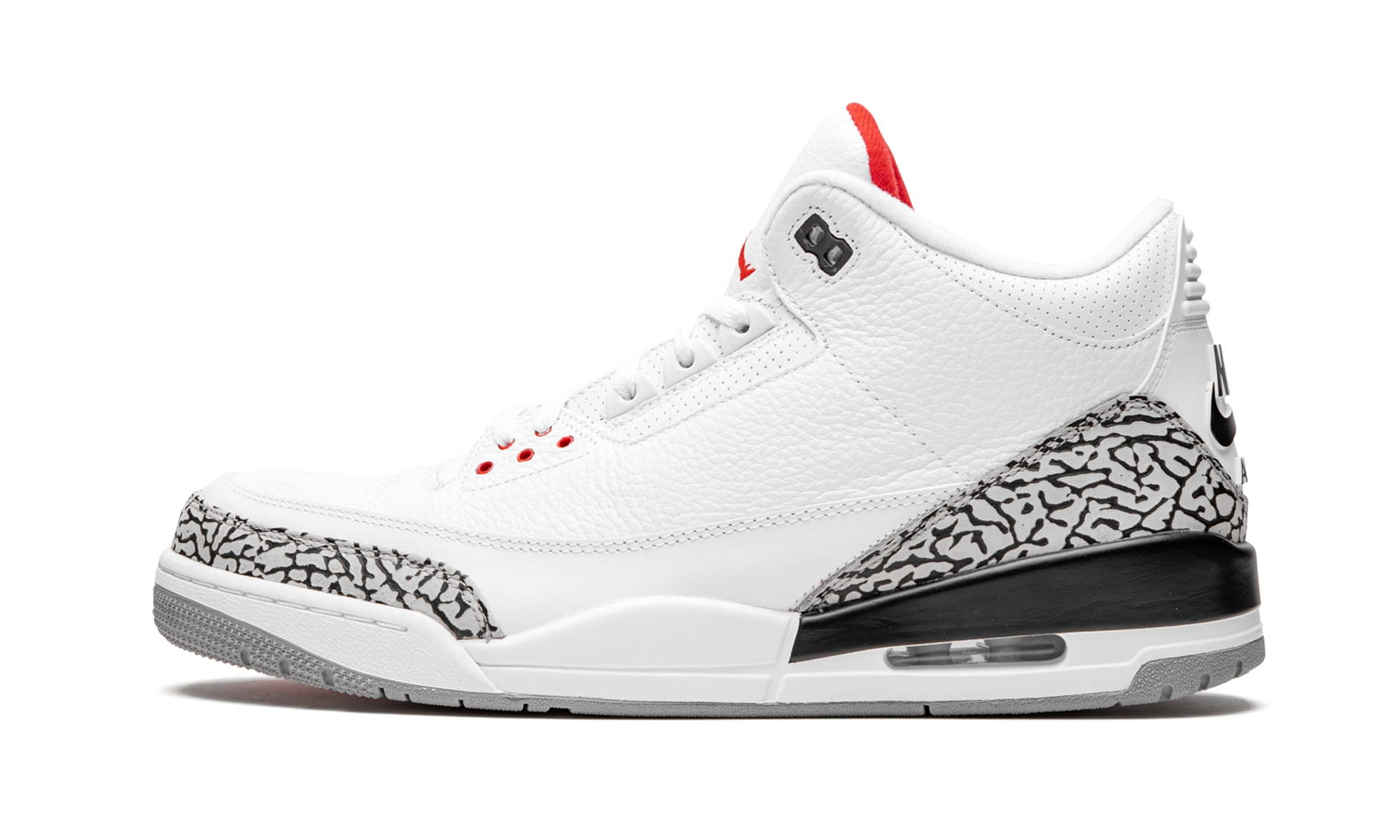
We can’t say for certain what Tinker Hatfield’s original AJ III prototype looked like, but we imagine it must’ve been similar to the White Cement. Jordan laced these up in 1987 and they’re the colorway he rocked when he crushed the Slam Dunk Contest, creating a moment that lives rent-free in the minds of all basketball fans, forever.
Released to the public as one of the debut colorways, the White Cement is very much the icon of the AJIIIs and you’ll find that most of the colorways on this list are merely subtle alterations of this original design.
Hatfield really knocked it out of the park with this first one.
Air Jordan III Black Cement, 1988
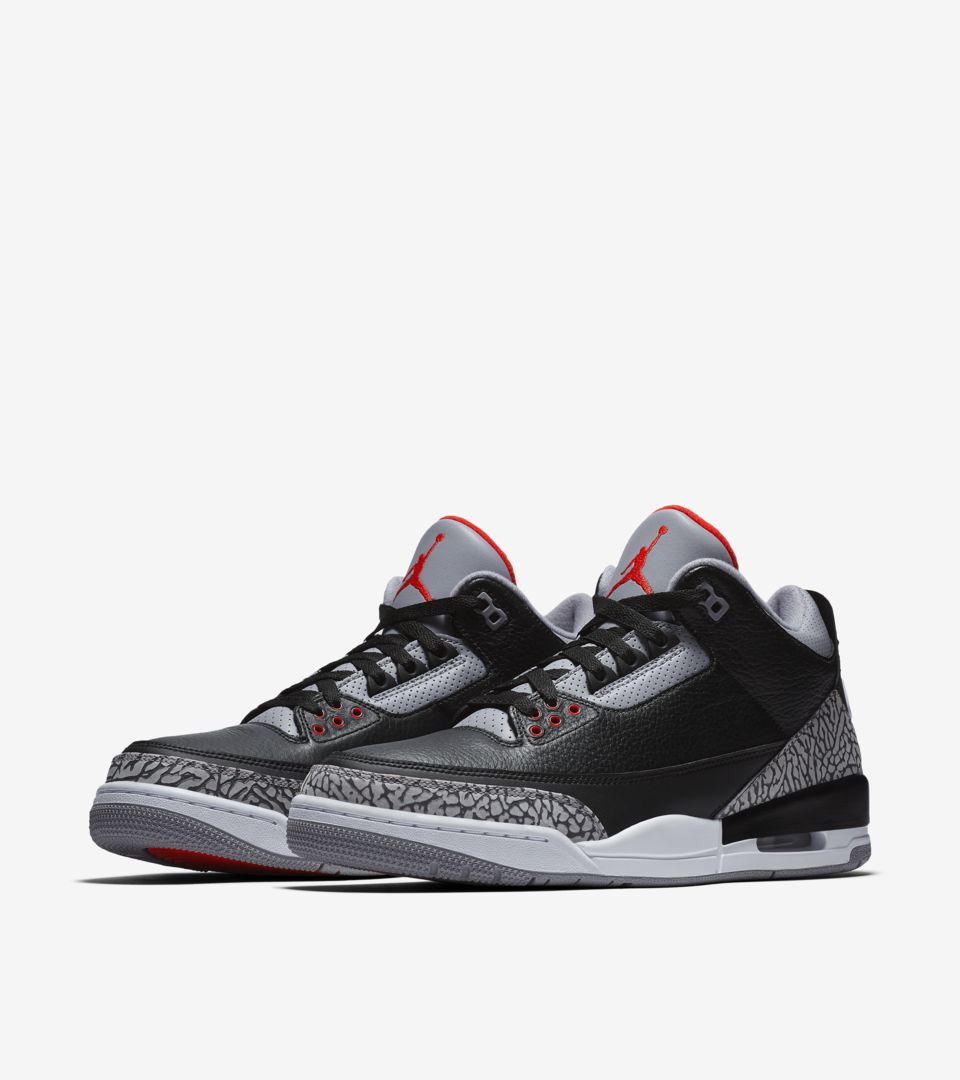
Worn by Jordan in 1988 at the NBA All-Star Game, the Black Cement is still the AJIII’s hottest silhouette — fetching the highest prices on the aftermarket and topping several Jordan III rankings floating around on sneakerhead message boards. It’s identical to the White Cement, only it features black leather paneling with grey accents instead of a clean white upper, which meshes nicely with the cracked cement panels.
The university red eyelets and Jumpman logo also pop in a radically different way than the red on white. We could argue in the comments all day about which is the more iconic release but there’s no need — both are impeccable and legendary.
Air Jordan III Fire Red, 1988
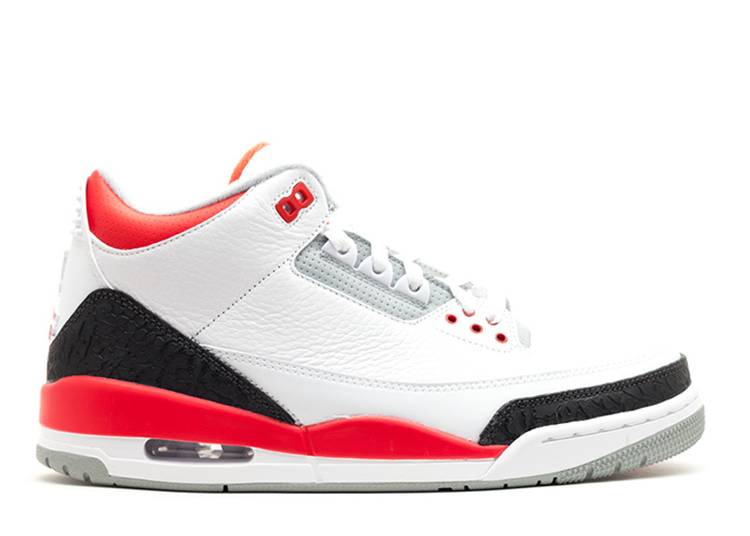
During the 1988 NBA Playoffs, Jordan switched up his White Cement kicks for this Fire Red iteration. While the Fire Red seems to be the least popular of the original four colorways, it birthed an iconic Nike colorway that would find fame on several other Jordan silhouettes in the future.
The Fire Red is sleek. The elephant skin print (we’re sticking to calling it that, which feels more accurate) has been blacked out here, which allows the angles of the sneaker’s panels to really shine. Overall, the Fire Red makes it easier to appreciate how revolutionary Hatfield’s design was amongst all the other basketball sneakers out there.
Air Jordan III True Blue, 1988

The Black and White Cement colorways may be the most iconic of the original four AJ III colorways, but the True Blue is the sleeper hit. With its mix of university blue, and red, the same bright white upper as the White Cement, and an extra hit of elephant print at the eyestay, the True Blue is still one of the best colorways the silhouette would ever be dressed in.
MJ rocked these in an exhibition game between the 1988 NBA All-Stars and Team USA and wore them again in 2001 when he briefly played for the Washington Wizards.
Air Jordan III Mocha, 2001
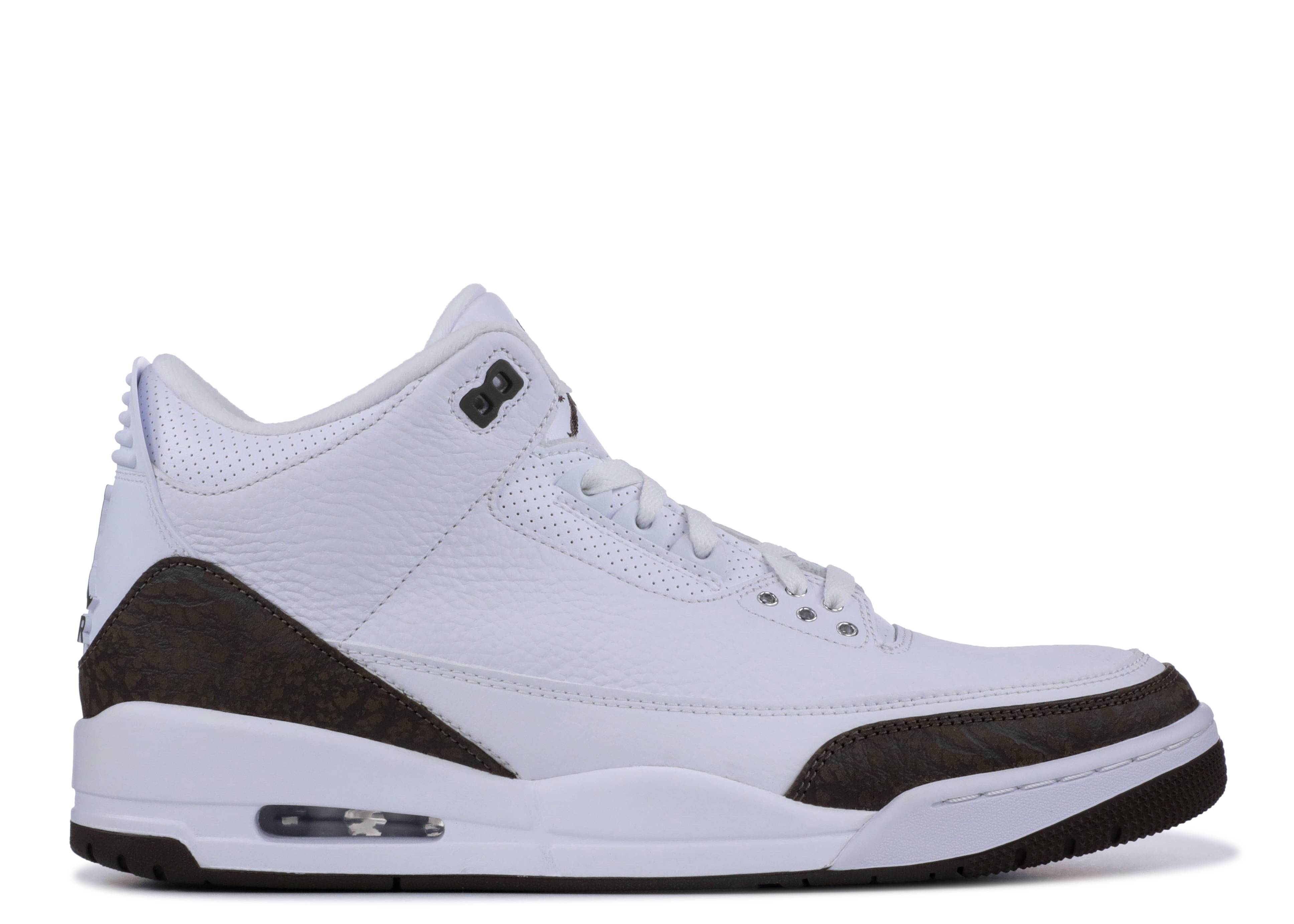
Jordans always look great in Mocha colorways and this 2001 release of the AJ III is no different. The first colorway to step away from the OG makeups, the Mocha features a double all-white upper with brown-toned elephant print panels and a matching outsole and Jumpman logo.
Not much to say here, this one still looks like a must-have twenty years later. Luckily, the colorway gets refreshed often.
Air Jordan III Black Cat, 2007
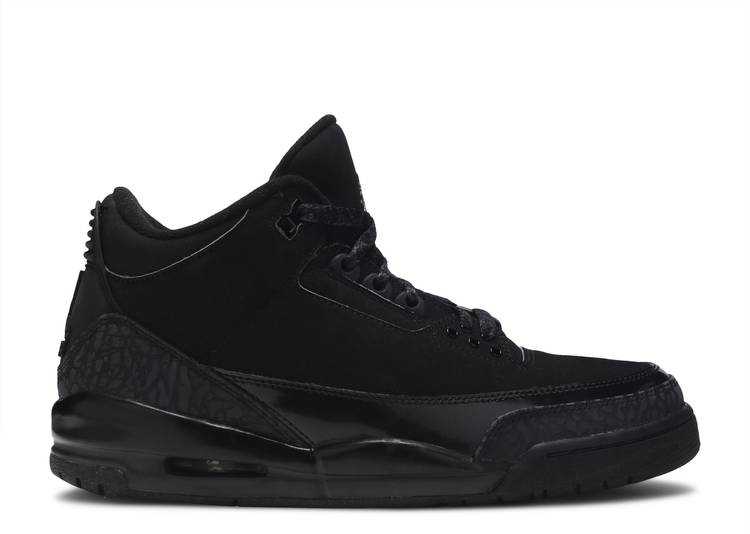
Check out that gap in years between the Mocha and the Black Cat! AJ III colorways hit a bit of a lull in the early ’00s but ’07 would bring about a sort of renaissance for the silhouette due, in part, to the release of the Black Cat. Inspired by Jordan’s “Black Cat” nickname — earned for the way he attacked the opposing team and dominated the court — this colorway began Nike’s obsession with the Triple Black colorway.
A detail that’s hard to catch unless you’ve owned a pair, the Black Cat’s feature elephant print shoelaces, which Nike needs to bring back immediately.
Air Jordan III Pure Money, 2007
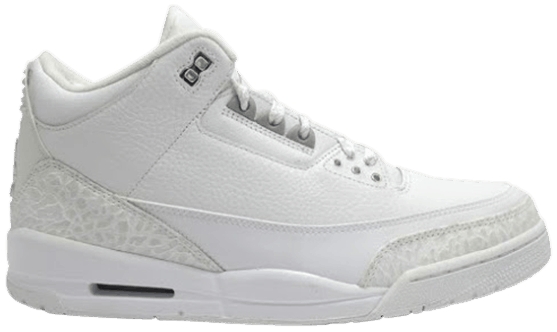
Following the template of the White Cement/Black Cement, the Pure Money is the all-white answer to the AJ III Black Cat. The Pure Money features an all-white upper with grey eyelets and a platinum Jumpman logo. They very much look like a rich person’s pair of sneakers. We gotta go with the Black Cat as the superior pair though.
Air Jordan III Flip, 2007
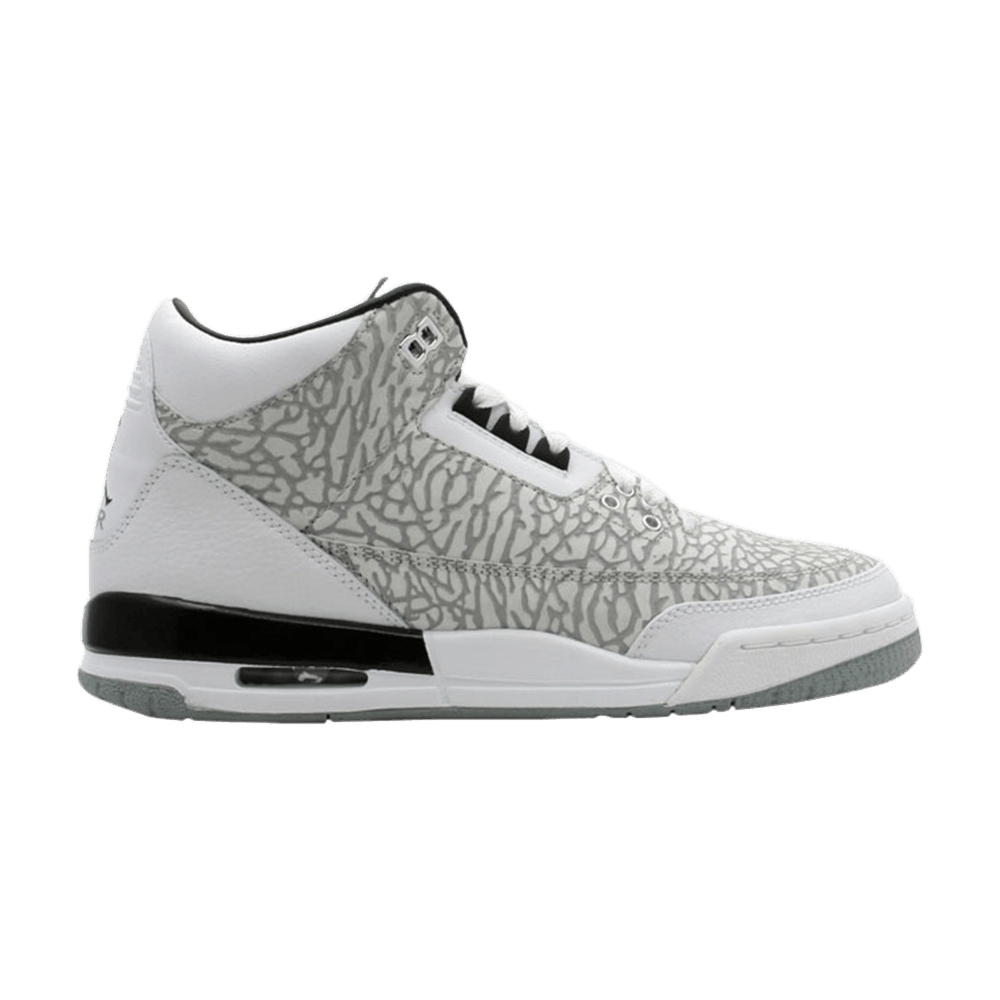
The Flip has always seemed like a weed-influenced design to me. I imagine Nike designers sitting around and getting high until someone blurted out, “But like… what if we flipped the upper with the elephant print mudguard and put the elephant print as the sneakers upper…man.” And then that’s what they did.
It’s kind of cool to see the elephant print get a bigger canvas to breathe. Alas, we wouldn’t trade these in for any regular non-flipped colorway, so this is more of a curiosity than an essential.
Air Jordan III Do The Right Thing, 2007
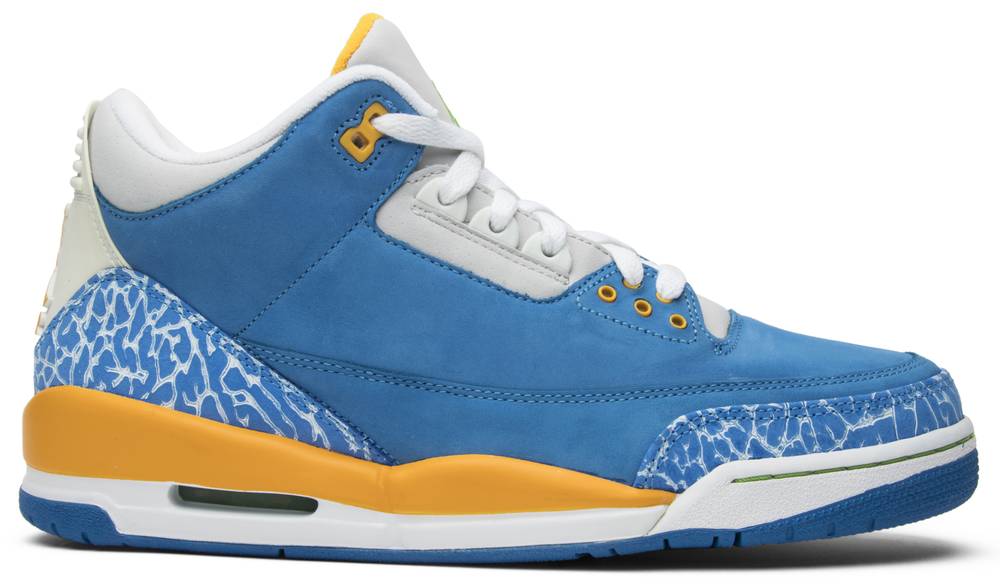
The AJ III “Do The Right Thing” should’ve been an AJ IV (that’s what Buggin’ Out was wearing in the film that shares this sneaker’s name) but for whatever reason, it’s a III. We’ll take it. Named after and inspired by Spike Lee’s superb film Do The Right Thing, the DTRT features a blue and mustard yellow colorway with radiant green threading that borrows its colors from Do The Right Thing’s movie poster.
Air Jordan III Cool Grey, 2007
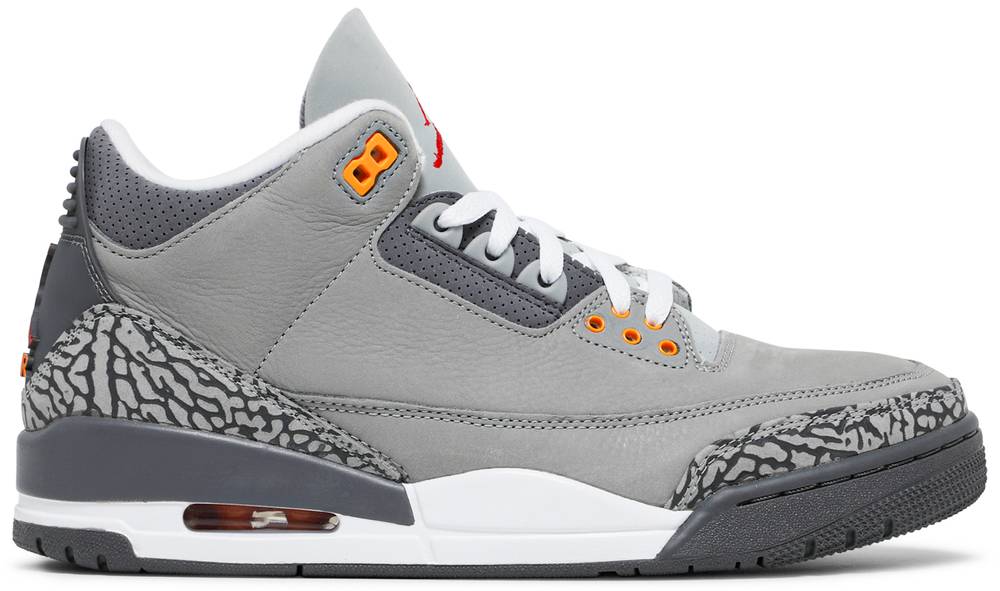
The Cool Grey looks like a cityscape, this colorway features an all-grey upper with Nike’s Sport Red on the Jumpman logo and Orange Peel at the eyelets which really pop against the more drab and understated upper. A reissue of this colorway dropped this year and it, as you might’ve guessed, sold out instantly.
Air Jordan III Doernbecher, 2010
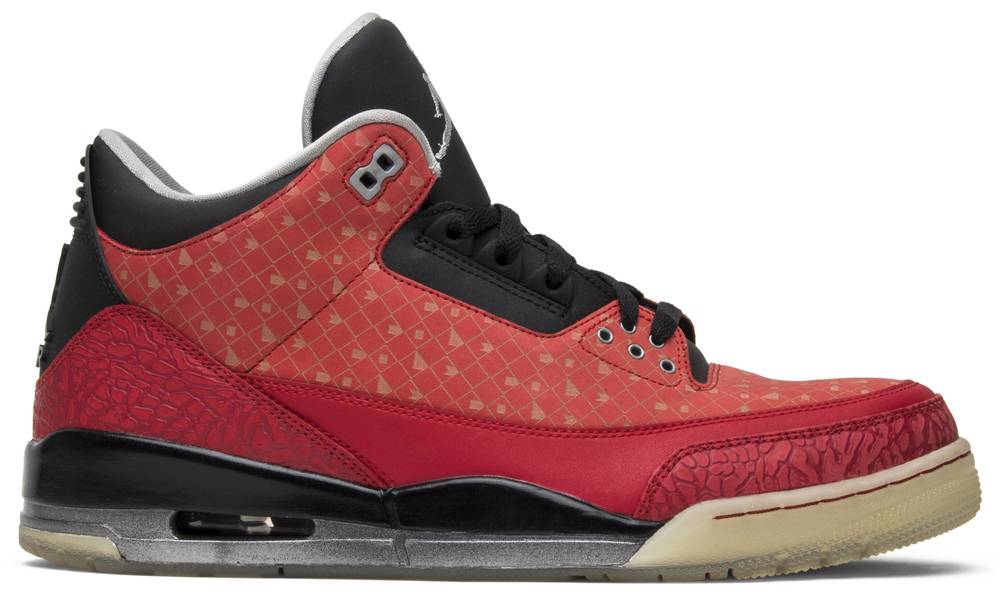
Made as part of Nike’s partnership with Portland’s OHSU Doernbecher Children’s Hospital, the Doernbecher was designed by Cole Johanson — who covered the upper in a metallic diamond-patterned varsity red design and listed the two comforts that he credits with helping him beat his lymphoma on the sneaker’s insole: spaghetti and chocolate.
The drop was so popular at the time — probably because it represented a radical shift in the look of the AJ III — that Nike re-released it again three years later. Proceeds benefit OHSU and Doernchecher.
Air Jordan III Oregon Ducks Pit Crew, 2011
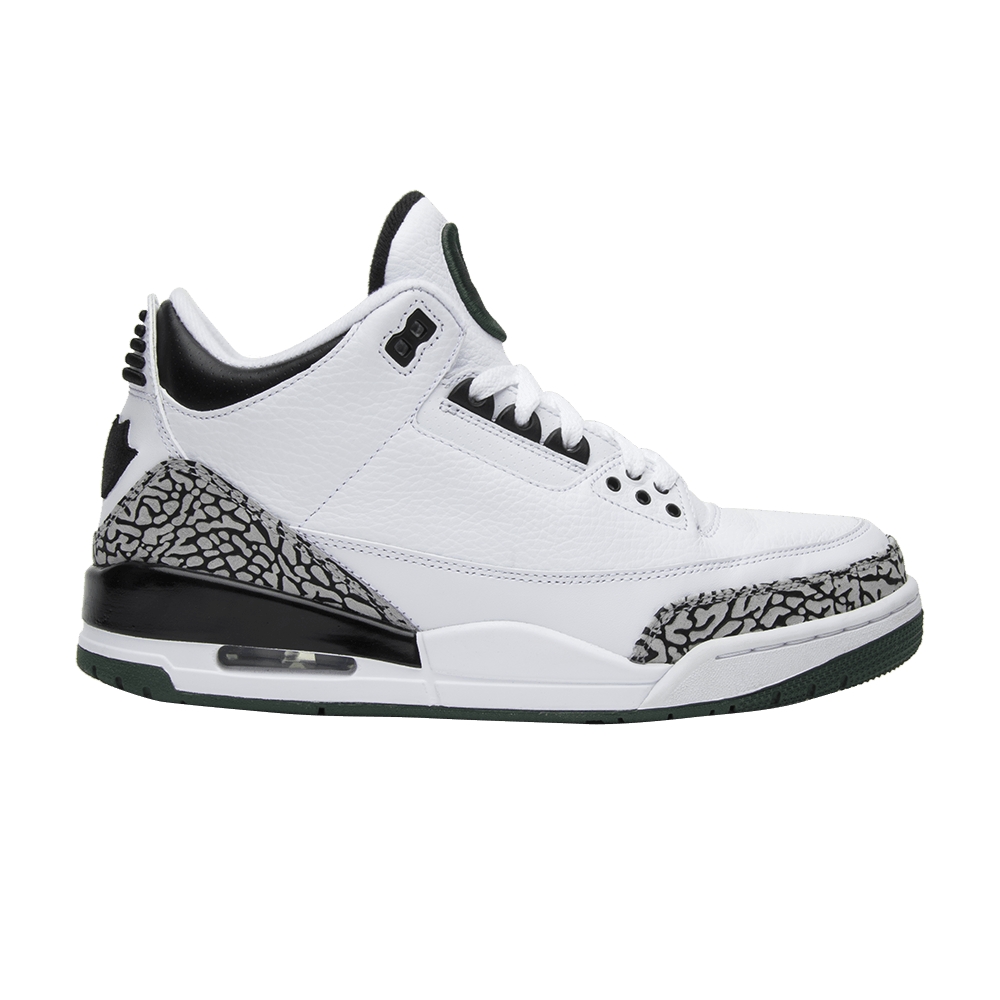
Released in both a White and Black iteration (this is the White, obviously) the AJ III Oregon Ducks Pit Crew was made in honor of the University of Oregon’s student cheer section, known for their insane team spirit at home games. The Pit Crew was the name given to the fans who would routinely show up at U of O games no matter where the team traveled. The design of the sneaker featured duck prints in place of the Nike logo.
Air Jordan III Black Flip, 2011
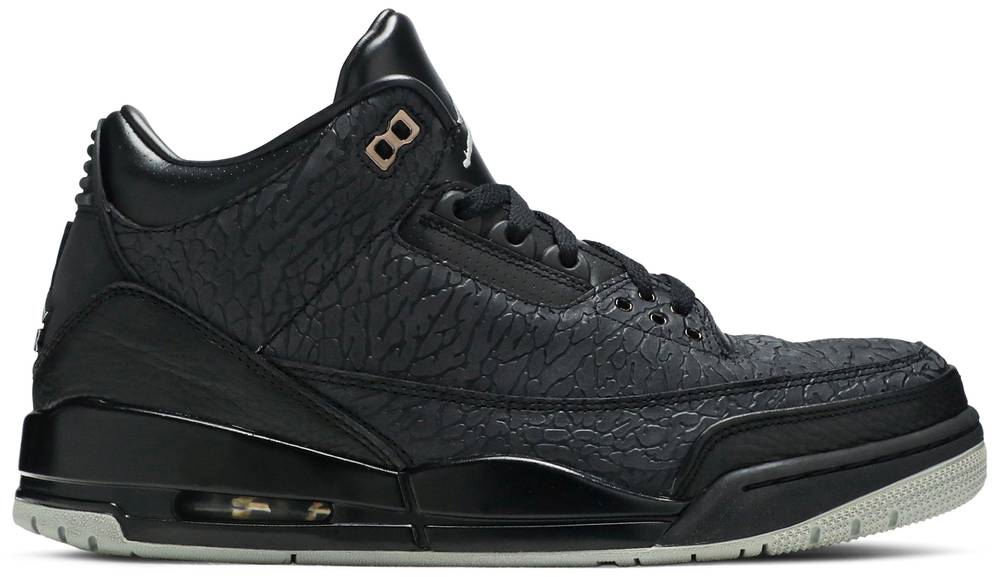
We considered just including the Black Flip on this list and skipping over the OG because in every way this design is just better. But it also felt wrong to talk about the Black Flip without mentioning what came before. The Black Flip is superior because the all-black take on the elephant print pattern is a lot more subtle, so the sneaker looks less like a confusing mess and more like a curious alteration of a classic design.
Air Jordan III Legends of Summer, 2013
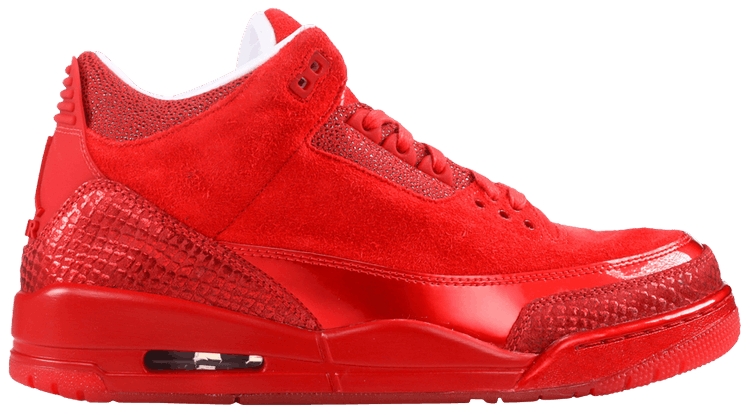
We were THIS close to not including the AJ III Legends of Summer all-red colorway. This. Close. But just… look at it? Clearly inspired by the Yeezy Red Octobers, this design dropped as part of the merch on Justin Timberlake and Jay-Z’s world tour of the same name. Since the first day they were teased by JT, Nike fans have been feverishly waiting for another drop.
What are you waiting for Nike? The tenth anniversary? Cool, hopefully, a refresh is just two years away from now.
Air Jordan III Solefly Lotto, 2014
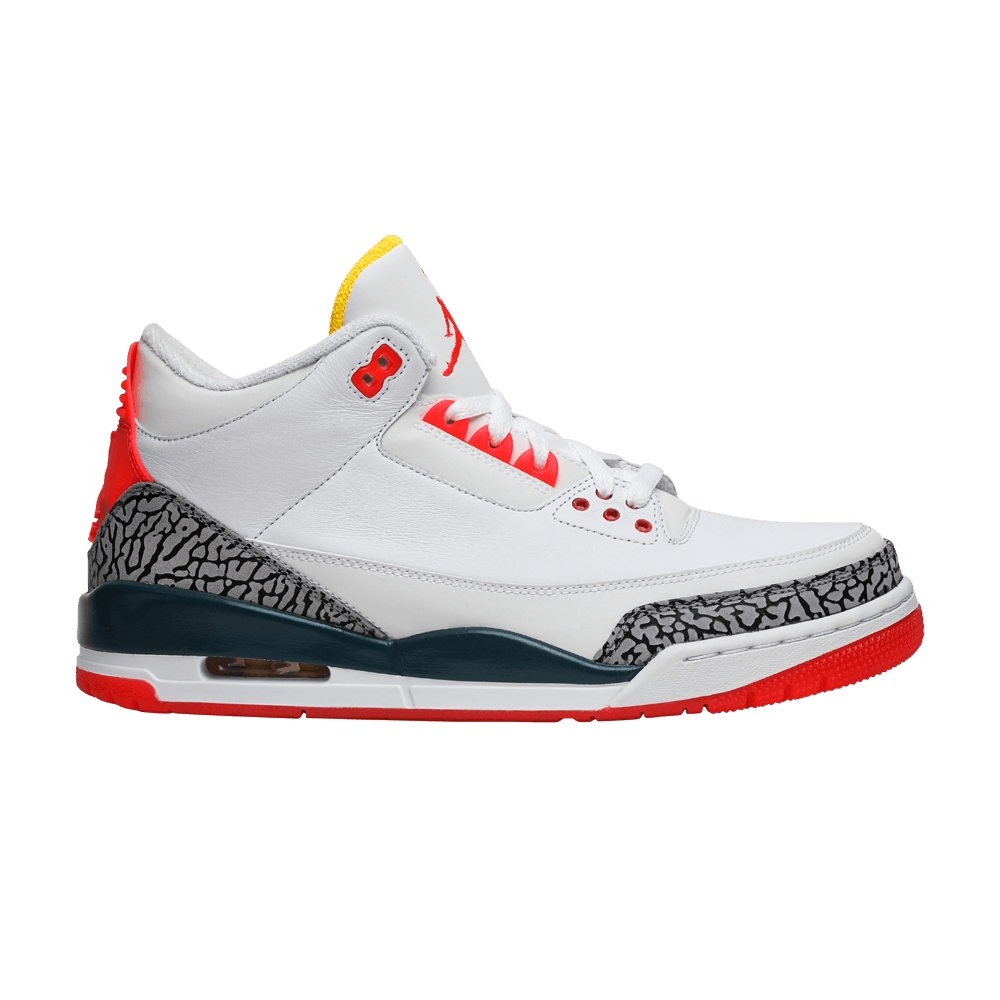
No, you’re not seeing things, the Solely Lotto AJ III’s look very similar to both the Fire Red and White Cement colorways, except for a splash of yellow under the tongue, and a flamingo logo in place of the Jumpman. Inspired by the appearance of Florida lottery tickets, the shades used are slightly different than the OGs. We have a mix of white, laser crimson, nightshade, and laser orange, so it’s a bit more vibrant than the White Cement and Fire Red, which utilize the moodier University Red.
Air Jordan III Sport Blue, 2014
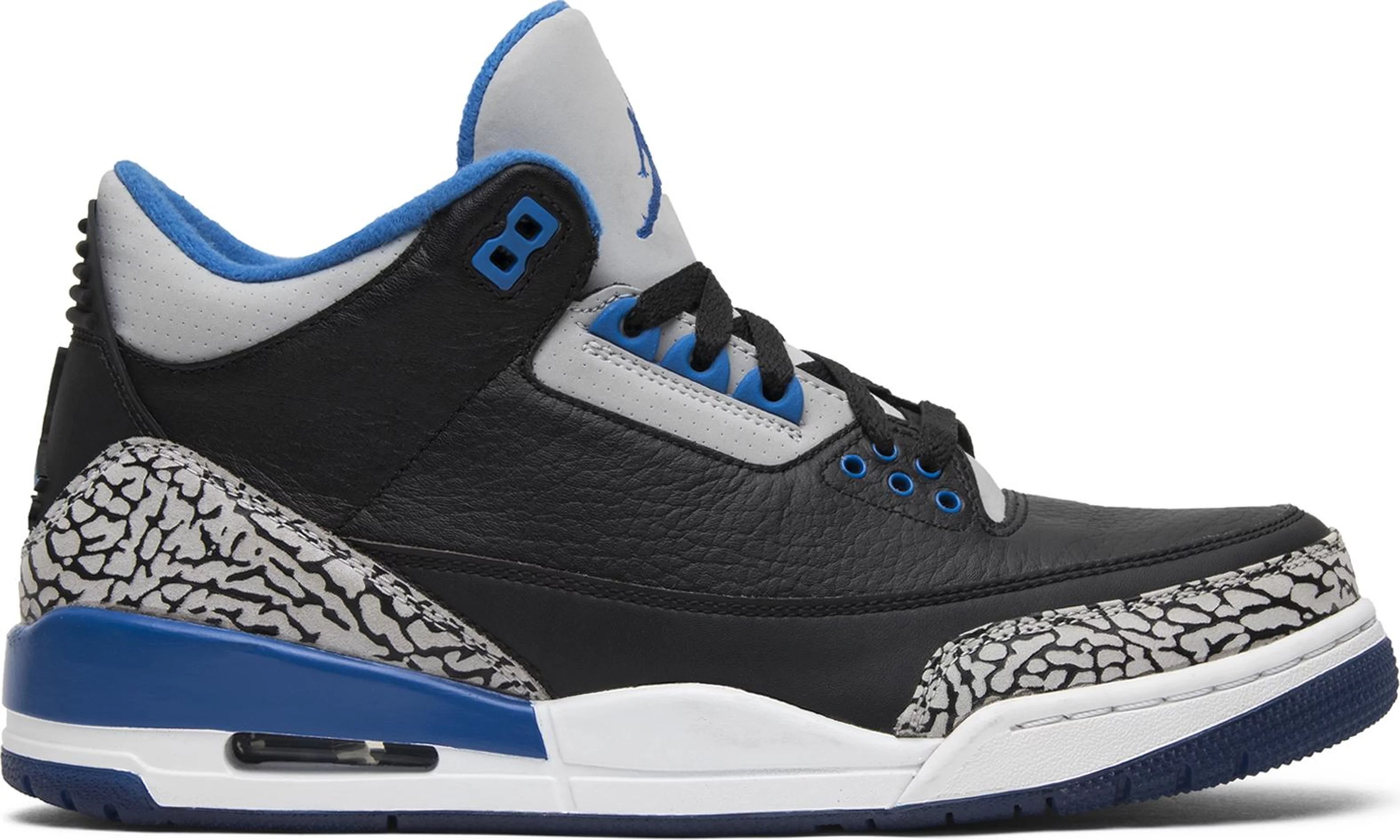
With a sneaker as dope looking as the Air Jordan III, Nike really doesn’t have to do much to produce a great new colorway. Case in point, 2014’s Sport Blue which is essentially the same design as the Jordan III Black Cement with Sport Blue accents in place of the red. It’s lazy but, I mean… look at the thing! Hard to be mad at this.
Some days, we like it more than the original.
Air Jordan III Kobe, 2016
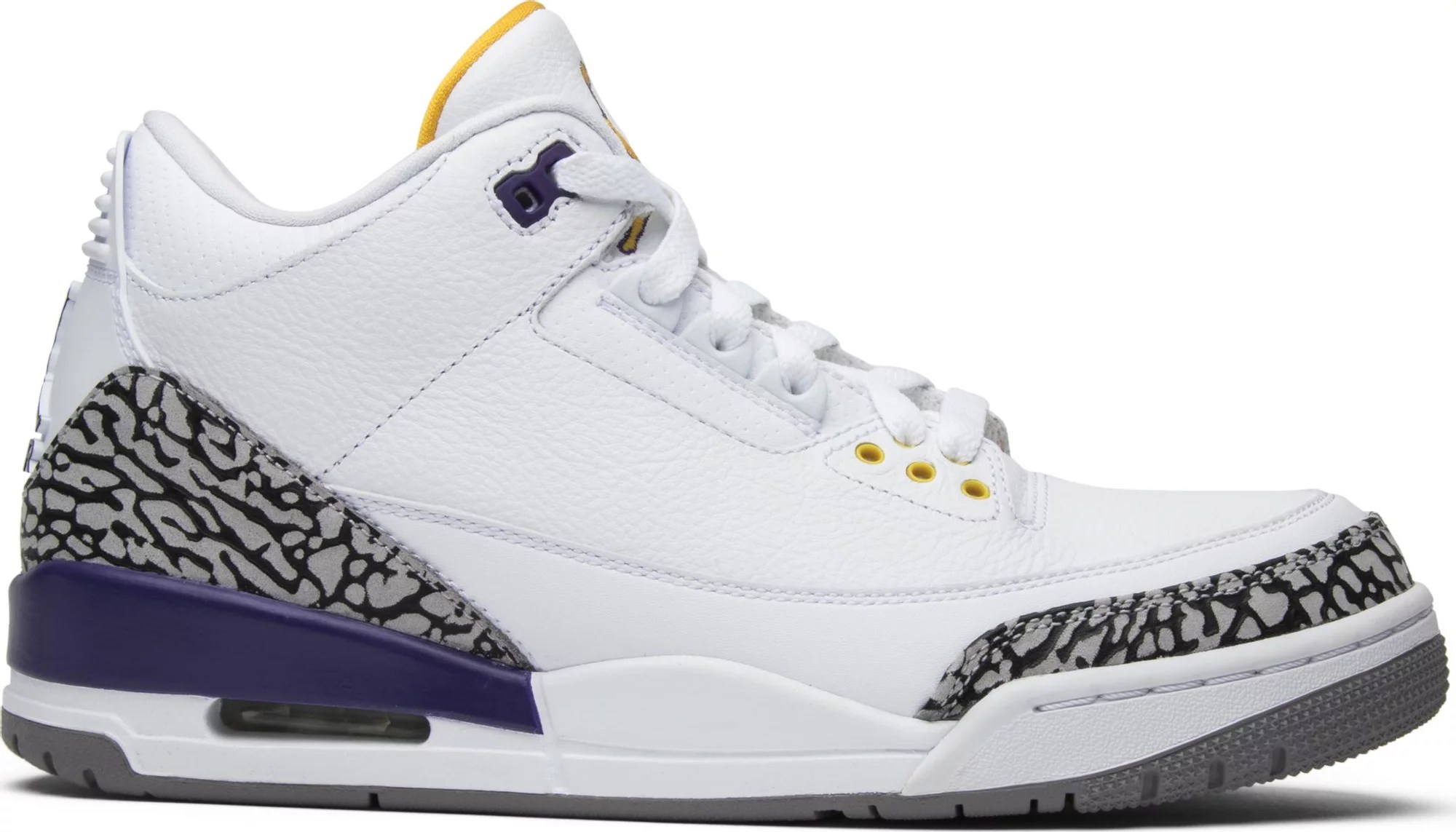
Inspired by Kobe’s iconic PE sneakers from his 02-03 season, in 2016 Air Jordan decided to show basketball’s second most important swing guard some love with an Air Jordan collection repping Laker’s colors. The set dropped as both a Jordan III and a Jordan 8 and featured a leather upper with grey elephant print paneling and embroidered details over the tongue.
These days, with the loss of Kobe, there is something bittersweet about this colorway. Still, it’s great to see two legends repped in a single shoe.
Atmos x Air Jordan III Safari, 2017

Made in collaboration with Japanese streetwear label Atmos, the Jordan III Safari scans like a “greatest hits of AJ-III design” compilation. The sneaker sports a black nubuck upper with safari print overlays in place of the cement panels over an icy outsole with embroidered Jumpman branding at the tongue.
The combination of sail and black with orange accents is too damn clean! It’s impossible not to love this pair the more you look at it.
DJ Khaled x Air Jordan III Father Of Asahd, 2017
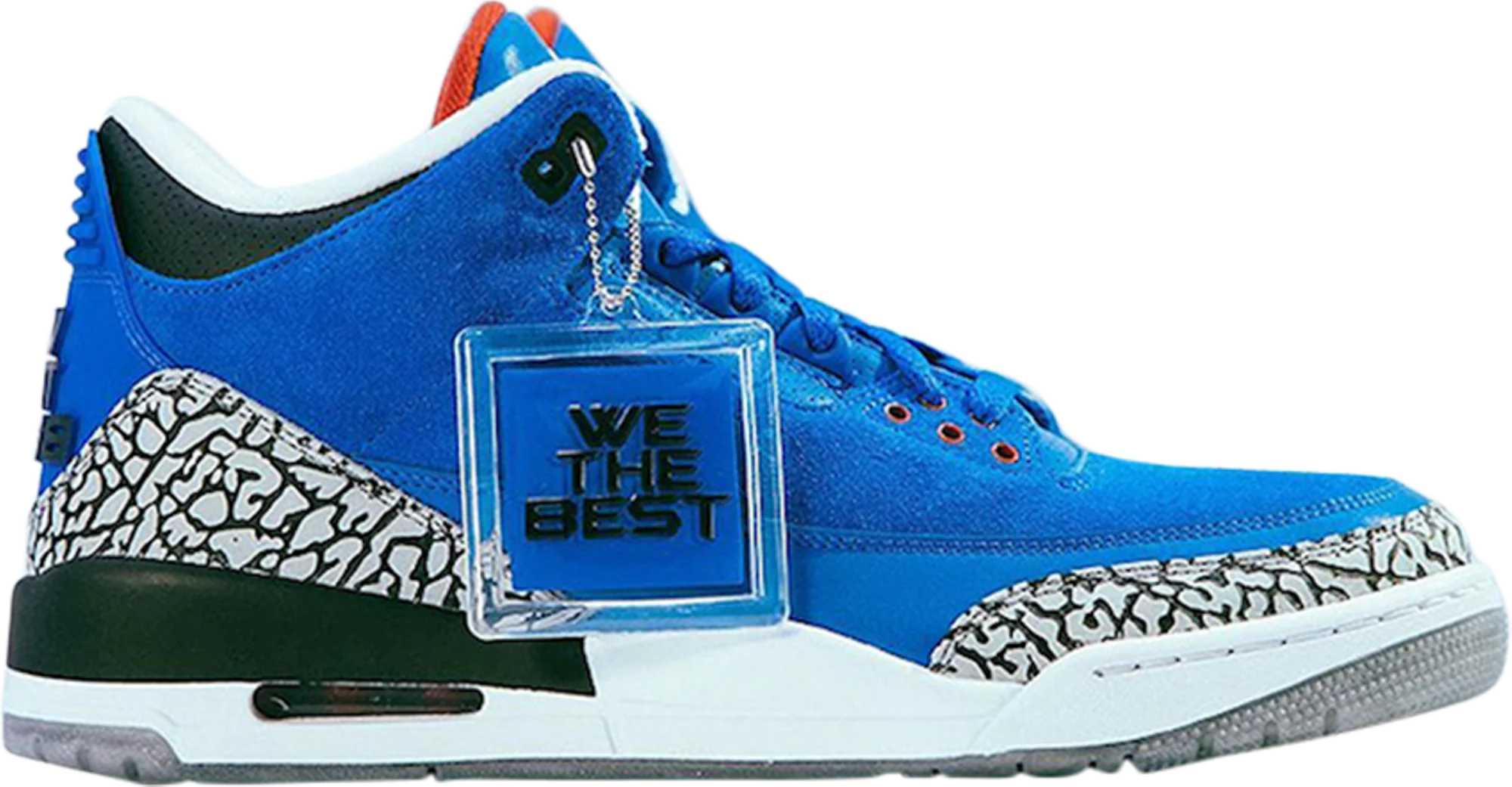
Some sneakers are so prohibitively expensive, they might as well not exist. That’s what kept DJ Khaled’s 2017 Jordan III off this list the first time around but for the refresh, we’re going to go ahead and include it. Made in celebration of Khaled’s Father Of Asahd album, this Jordan III of the same name featured a plush suede upper in blue with an icy translucent outsole, and tasteful orange accents.
It’s undoubtedly a great colorway, even if you’ll never own a pair. The last time I checked the aftermarket price, it was hovering near 8k. That’s absurd.
Air Jordan III Seoul, 2018
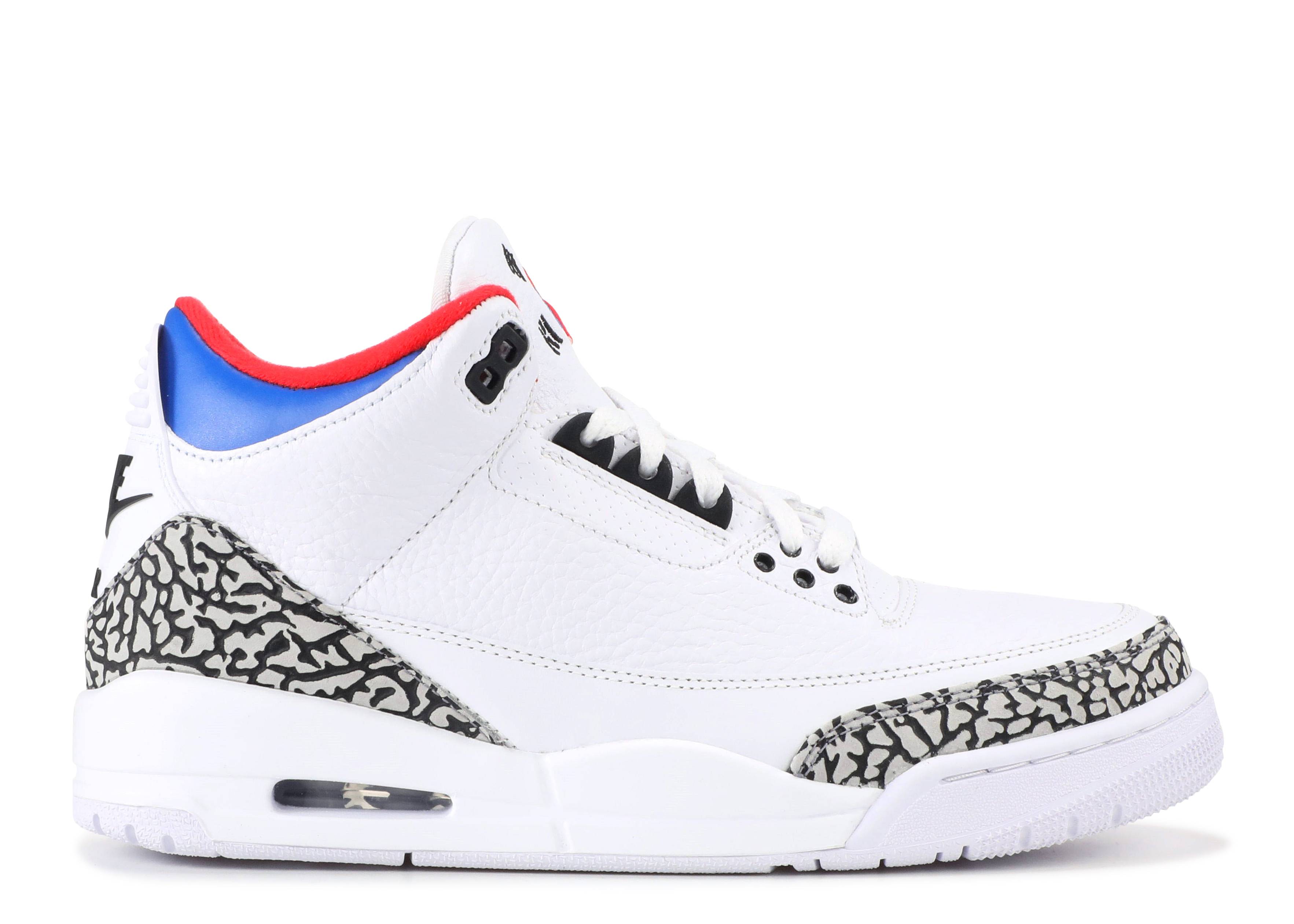
The AJ III Seoul resembles the True Blue makeup in a lot of ways, but the design is much cleaner here — using a combination of an all-white upper with colors borrowed from the South Korean flag on the collar. Made in collaboration between Tinker Hatfield and Dan Sunwoo at Nike’s Innovation Kitchen, Seoul is easily one of the best AJ III colorways to drop over the last five years.
Other details include the use of the taeguk symbol from the Korean Flag in place of the left sneaker’s Jumpman logo.
Air Jordan III Tinker Oregon Ducks, 2018
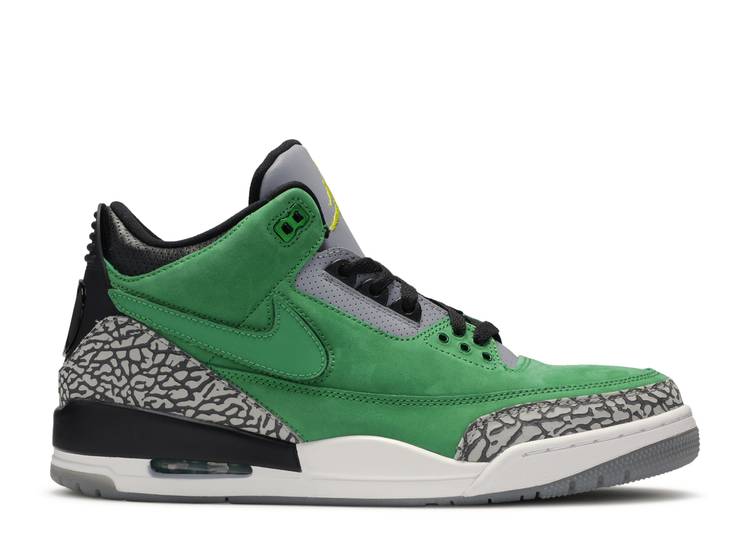
Borrowing the colors of Tinker Hatfield’s alma mater, the Tinker Oregon Ducks features a green apple nubuck upper with yellow cement and grey accents. In a radical departure from the original design, the Tinker Ducks sport a blunted Nike Swoosh, which gives the sneaker a radically different look.
Air Jordan III Laser Orange, 2020
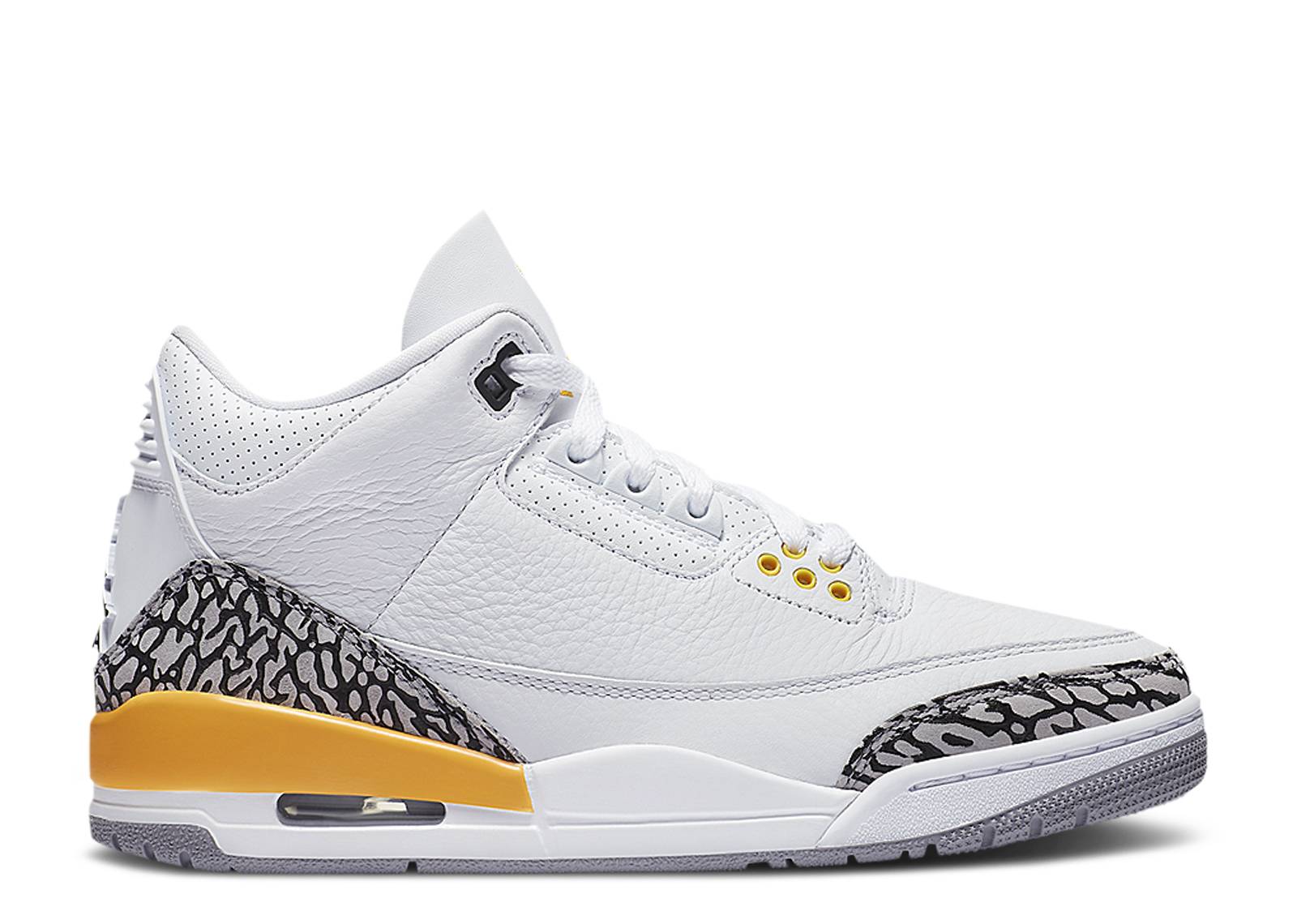
A future classic, the AJ III Laser Orange was released as a woman’s exclusive and was clearly made as a gesture to Nike’s growing smaller-footed customer base. Though you have to wonder, if Nike would’ve just offered all those classic AJ III colorways in women’s sizes to begin with, maybe they could’ve made a whole lot more money, since sneakerheads have been up-sizing kid’s sizes for years before Nike bothered to take notice.
The Laser Orange is clean. If Nike would drop a full-size run people would certainly be clamoring for them.
Air Jordan III UNC, 2021
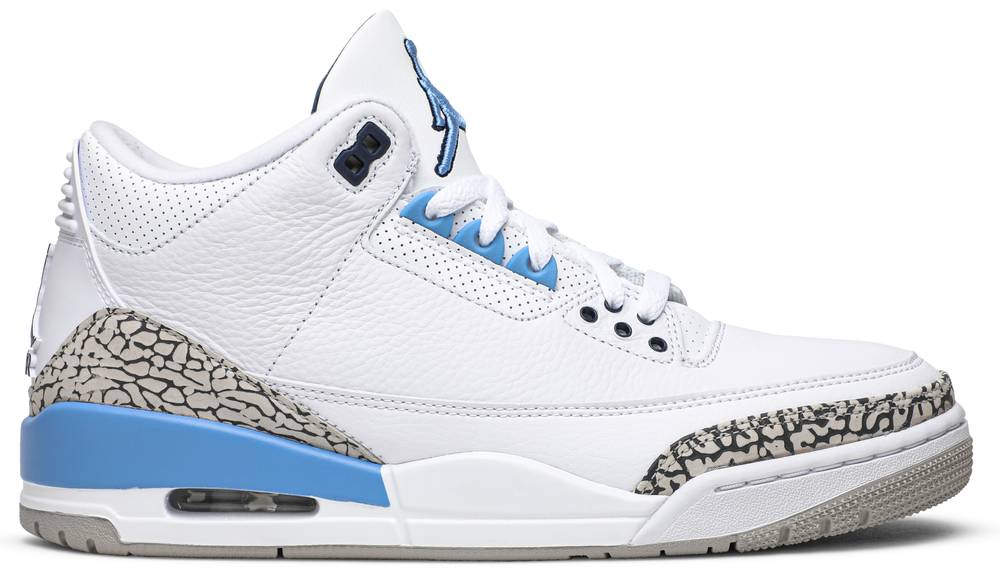
Is it wrong to say that one of the top five AJ III colorways to ever release didn’t drop until 2021? Because we’re saying it. The UNC deserves a spot amongst the OGs, this design is just too clean. Made in homage to Michael Jordan’s alma mater, the UNC features University Blue accents over a dual-textured leather upper with an embroidered Jumpman logo and those iconic elephant print panels.
Hell, I’ll say it, I think the UNC is the best Jordan III colorway.
Air Jordan III Georgetown, 2021
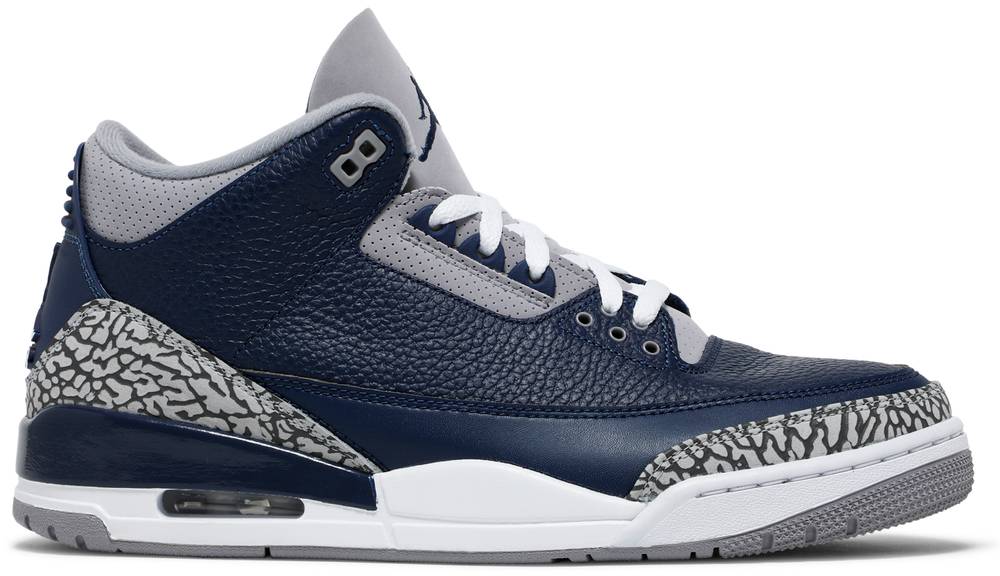
The AJ III Georgetown dropped in March 2021, the same month as our initial ranking! That means if we would’ve written this earlier, some other sneaker would’ve made the list. That’s hard to imagine because this one was destiny. Borrowing the colors of Georgetown University, the Georgetown or Midnight Navy, as it’s also known, the shoe features a mix of Midnight navy, cement grey, and white and was released in celebration of March Madness.
2021 was a great year for Jordan IIIs, leading to another renaissance for the silhoutte. To which fans of the shoe say: Bring it.
A Ma Maniére x Air Jordan III Raised By Women, 2021
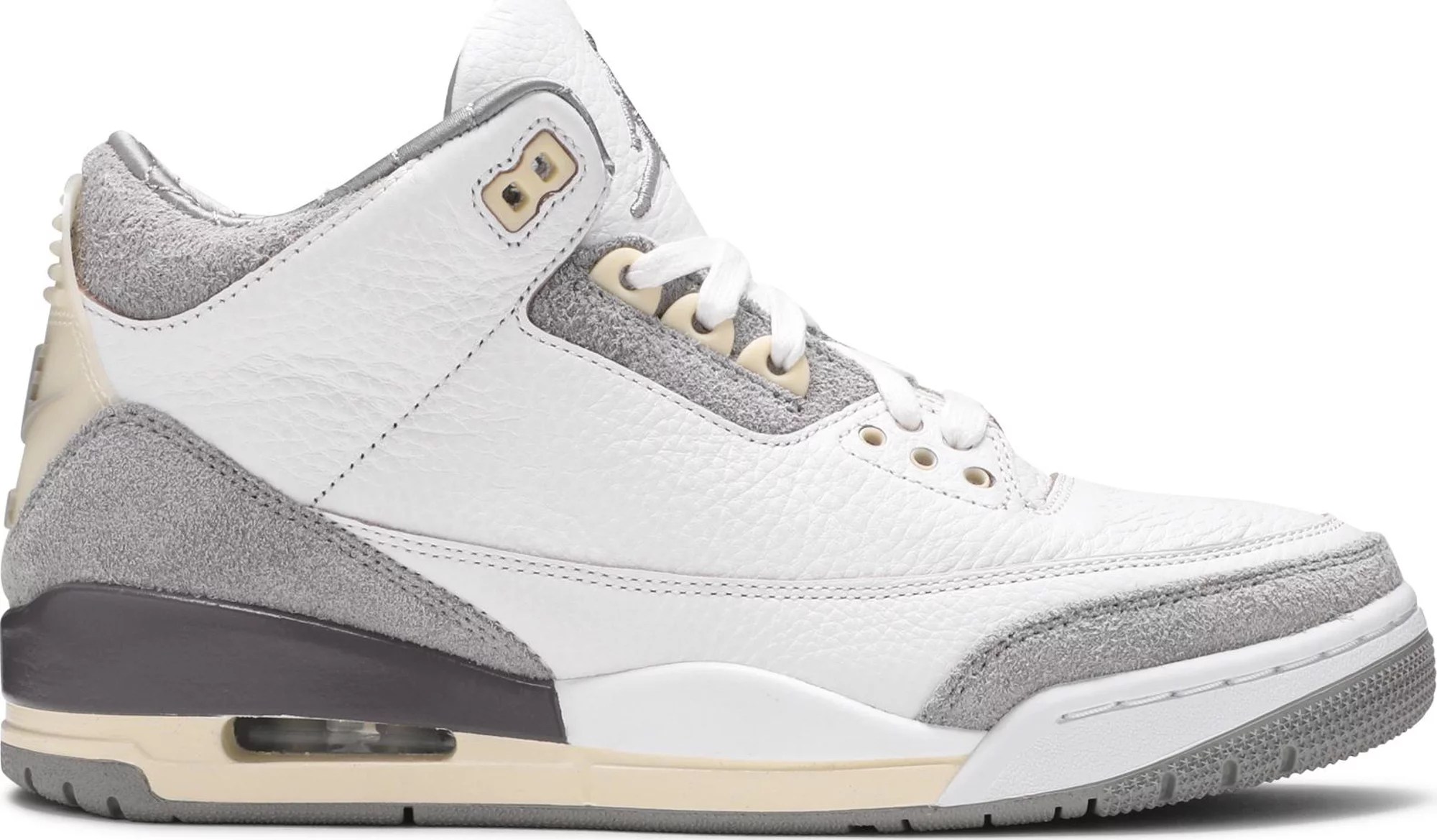
If this was a ranked list, this women’s exclusive colorway would without question make the top five. Where in the top five? Luckily, we don’t have to think about that! Made in collaboration with Atlanta retailer A Ma Maniére, the Raised By Women features a tumbled white leather upper with suede accents and dual branding. It ditches most of the touchstones of the most popular Jordan colorways but who cares? It does something new and it absolutely nails it.
This sneaker was so dope and beloved that a bunch of dudes whined about it being a women’s exclusive and it was finally dropped in a full-size run. It’s been a year since it’s drop but it’s still one of our all-time favorite Jordan III colorways and the perfect close to this list.

